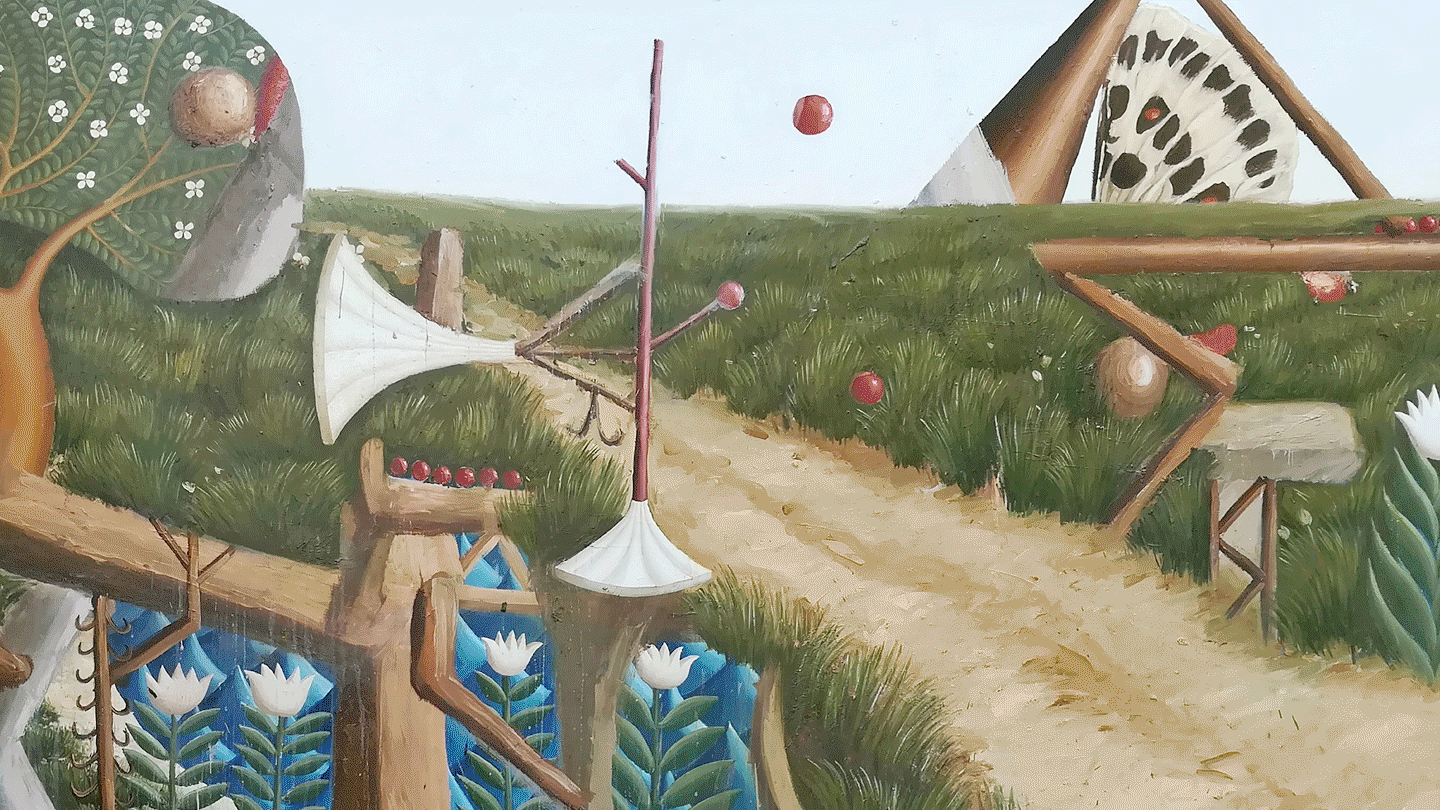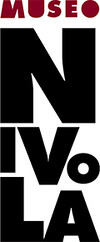Chimere
March 30–June 3, 2024
Via Gonare no. 2
08026 Orani NU
Italy
Hours: Thursday–Tuesday 10:30am–7:30pm
T +39 0784 730063
F +39 0784 730062
info@museonivola.it
The Museo Nivola is delighted to present the first solo exhibition of Siro Cugusi (1980) in an Italian institution. Siro Cugusi’s paintings on canvas and paper are striking for their refined technique and richly evocative imagery. Balanced between representation and abstraction, his artistic language is a personal reinterpretation of the Surrealist concept of the uncanny, the liminal and metaphysical space where nothing is what it seems.
Cugusi’s art cites and deconstructs the themes and genres of classical painting, opening up windows onto parallel worlds where sacred and profane symbols merge, all logical principles are subverted and apparently unrelated objects are linked by mysterious bonds.
Curated by Luca Cheri and Camilla Mattola, the exhibition explores the artist’s most recent work: large canvases that revisit the traditional genres of landscape, still life, the nude and portraiture, combining recognisable iconographic elements, abstract forms and gestural brushwork in an unexpected way.
The natural landscape is a recurring theme, evoked by large green colour fields that reference trees and plants. While the formal simplification of the subjects and the stylised details in the landscape evoke early Renaissance art, from Masaccio to Piero della Francesca, the symbolism of the image of the garden as a secret, spiritual dimension conjures the Flemish artist Hieronymus Bosch’s late fifteenth-century triptych The Garden of Delights.
The perspectival construction, which alternates Renaissance one-point perspective and the bird’s eye view with the twentieth-century distortions typical of Metaphysical and Surrealist art, is necessary for unifying a series of incongruous elements that are sometimes difficult to distinguish. The depth is, however, often contradicted by flat, decorative backgrounds that are repeated and overlapped on different planes.
Figurative fragments emerge in this irrational space, struggling against a recurring impulse towards abstraction that translates into thick, expressive brushstrokes. We glimpse body parts, gears and pieces of machines, instruments and objects that are familiar but difficult to identify. Pink fields evoke human flesh, conjuring the gelatinous, grotesque bodies in paintings by Francis Bacon, but cheered by a rich, luminous palette. In some figures, it seems impossible to differentiate the biological material from the mechanical, almost as if the two dimensions have merged.
The large format lends Cugusi’s paintings an experiential quality, creating an environmental, immersive effect. Before them, it seems as if we have been catapulted into impossible scenes, halfway between the unconscious and reality. Through these landscapes dominated by illusions and imagination, the artist tries to create a parallel, utopian world, a personal aesthetic and poetic dimension, in works that inevitably clash with the prose of reality and reveal themselves to be chimeras.
Siro Cugusi’s solo show, accompanied by a catalogue with critical essays by the curators, follows that of the Surrealist painter Bona de Mandiargues, symbolically linking the two different generations of artists in the continuously transforming space of the Museo Nivola.
With this exhibition, the museum is confirming its commitment to supporting and promoting new generations of artists working in Sardinia and beyond.
Siro Cugusi was born in Sardinia in 1980. He graduated in painting from the Accademia di Belle Arti in Sassari in 2004 and then moved to Paris. He has shown his work in numerous exhibitions in Italy and abroad since 2003. His solo shows include Voyage and Return (Cooke Latham Gallery, London, 2022); Forest (Steve Turner Gallery, Los Angeles, 2020; A Saucerful of Secrets (Galeria ATC, St. Cruz de Tenerife, 2019); Aleph (Annarumma Gallery, Naples, 2018). He currently lives and works in Sardinia.
Museo Nivola in Orani is run by the Fondazione Nivola, a non-profit cultural institution devoted to the promotion of the artistic and personal legacy of Costantino Nivola, support for contemporary art in all forms, and the cultural and social development of central Sardinia. The museum, is home to the most important European collection of works by Costantino Nivola (Orani, 1911 – East Hampton, 1988), a graphic designer, art director, and sculptor committed to the integration of the visual arts and architecture and key figure in the cultural exchange between Italy and the United States in the twentieth century.



